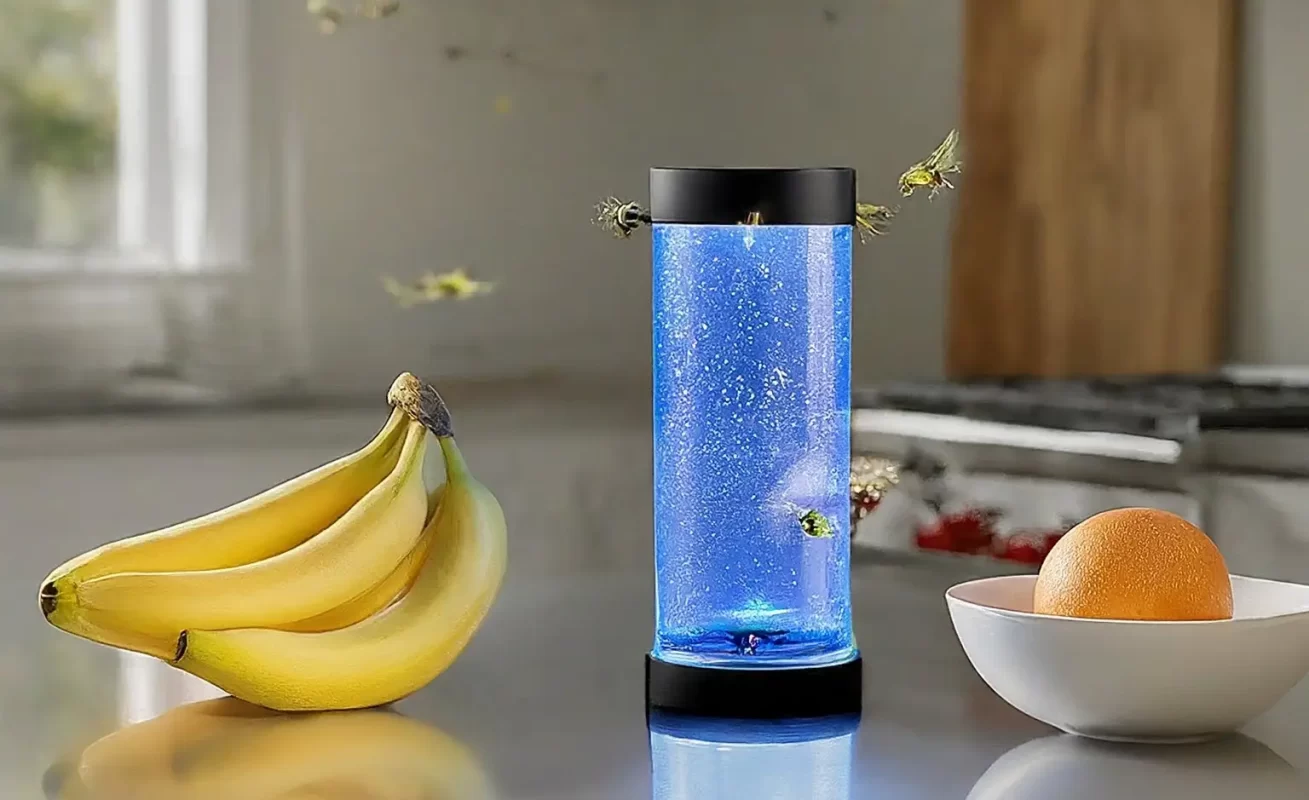Fruit Fly DIY Guides
Do UV Light Fruit Fly Traps Really Work?
Thinking about using UV light fruit fly traps to zap those uninvited fruit flies buzzing around your kitchen? A beautiful bowl of ripe fruit can quickly become a breeding ground for these tiny pests, leaving you frustrated and wanting to take action. Fruit flies are not only a nuisance, but they can also contaminate your food with harmful bacteria. UV light fruit fly traps are a popular option for eliminating these pests, but are they truly effective? Let’s delve into the science behind these devices to find out.
Key Takeaways:
Do UV light traps work on fruit flies? UV light traps are effective at attracting fruit flies, but their ability to completely eliminate an infestation depends on several factors. The trap’s design, placement, and the severity of the infestation all play a role. Here’s a breakdown:
- Trap Design: More powerful traps with stronger UV lights and larger trapping areas will naturally attract and capture more flies.
- Placement: Strategic placement is key. Put the trap near where you see the most fruit fly activity, and away from competing light sources like windows.
- Infestation Severity: For small infestations, a UV light trap can be quite effective in bringing the population under control. However, in cases of heavy infestations, the trap might only catch a portion of the flies, and additional measures might be necessary.
How Do UV Light Fruit Fly Traps Work?

Fruit flies, like many insects, have evolved a complex visual system that allows them to perceive a wider range of light wavelengths than humans can. This includes ultraviolet (UV) light, which is invisible to us but appears bright and attractive to fruit flies.
Exploiting this biological quirk, UV light fruit fly traps emit UV light in a specific range that is highly alluring to these pests. The light source acts as a powerful lure, beckoning the fruit flies towards the trap.
- Light Lure: The trap emits UV light in a range attractive to fruit flies and many other flying insects.
- Fly In: Drawn to the light source, the flies head towards the trap.
- Entrapment: Depending on the trap design, the flies meet their demise in one of two ways:
- Sticky Situation: A glue board with a sticky surface traps the flies, preventing them from escaping.
- Electrifying End: The trap uses an electrified grid to zap the flies on contact.
Pros of UV Light Fruit Fly Traps
- Non-toxic: Unlike chemical sprays, they don’t release harmful substances into your home.
- Easy to Use: Most models simply plug into an outlet.
- Relatively Safe: They pose little risk to pets and children compared to insecticides.
- Reduced Fruit Fly Population: They can help decrease the number of these annoying pests.
- Cleaner Kitchen: Traps reduce the risk of fruit flies contaminating food.
Read more: 10 Eco-friendly Ways to Make Natural Fruit Fly TrapsCons of UV Light Fruit Fly Traps
- Limited Effectiveness for Certain Situations: While UV light traps can be a helpful tool, they may not be a perfect solution for every scenario. Here’s why:
- Large Infestations
If you’re dealing with a severe fruit fly problem, a UV light trap alone might not be enough to completely eradicate the population. The trap may become overwhelmed with flies, and additional measures, like removing breeding sites and using other traps, are likely necessary.
- Weak Traps
Some UV light traps are less powerful than others. Traps with weaker UV lights or smaller trapping areas might not be as effective at attracting and capturing large numbers of flies.
Are UV Light Fruit Fly Traps Right For You?
The effectiveness of a UV light trap is depends. UV light traps are best suited for mild to moderate infestations. For severe infestations, it’s recommended to combine a UV light trap with other control methods to address the root of the problem. This might involve identifying and eliminating breeding sites, such as overripe fruit, or using apple cider vinegar traps to target adult flies.
Conclusion
UV light fruit fly traps can be a helpful tool in your fight against these pests. While they may not be a magic bullet solution, they offer a non-toxic and easy-to-use method for reducing fruit fly populations. If you’re dealing with persistent fruit fly problems, consider trying a UV light trap in conjunction with other preventative measures.
Let me know if you would like me to refine this further or add more information.

Hi there! I’m Beliz Güner, and welcome to my world of innovative solutions for fruit fly challenges. Though I hail from Turkey and have a background in interior design, my true passion lies in tackling the persistent issue of fruit flies. My journey has been anything but ordinary, as I’ve transitioned from creating beautiful spaces to devising effective fruit fly traps.
My interest in DIY home projects and product reviews has fueled my desire to share knowledge and personal experiences with others facing similar frustrations. Through my blog, I aim to empower you with the tools and insights needed to combat fruit fly invasions, drawing on my unique blend of design creativity and hands-on experimentation. Join me as we explore the most effective strategies to reclaim our homes from these unwelcome guests.


Worked like a charm!
Thanks, very useful!